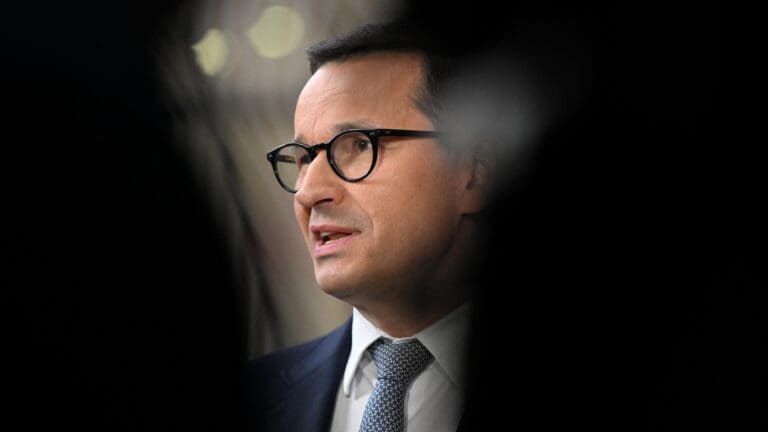With the latest judgment of the Court of Justice of the European Union, we have reached a new chapter in the disagreements between the Hungarian government and the European Commission over asylum regulations, as according to the Luxembourg-based institution, the asylum regulations introduced in Hungary after the 2015 migration crisis went against Hungary’s EU obligations.
Infringement Procedure: Again or Still?
It is not difficult to get lost in the maze of various procedures, notices, warnings and other EU sanctioning instruments applied against Hungary, so we tried to collect the topics on which infringement procedures are ongoing against Hungary, how they are conducted in practice, and we also examined the latest EU Court ruling related to domestic asylum regulations.
The key role in infringement proceedings lies with the European Commission,
as the enforcer of compliance with EU law, and with the Member State that has allegedly infringed EU law. There may also be cases where the procedure becomes three-polar, because if no out-of-court agreement can be reached between the government of the Member State and the ECJ, the College of Commissioners has the possibility to involve the Court of Justice of the European Union.
We can divide infringement procedures into two distinct but closely related stages. According to Articles 258 to 260 of the Treaty on the Functioning of the European Union, on the one hand, there is the so-called out-of-court or pre-litigation phase, and on the other hand, there is a procedure before a court. The first stage is that, if the Commission considers that a Member State has failed to fulfil an obligation under the Treaties, it sends a formal letter of warning to the country concerned asking it to comment on the matter. Depending on whether or not the Member State has commented, the Commission sends a reasoned opinion to the government explaining what it considers constitutes an infringement of Community law and requesting the state to comply with its obligations within a fixed period. The first stage is therefore entirely regulated as an out-of-court procedure and seeks to eliminate litigation between the European Commission and the government of the Member State concerned by allowing the parties to present their views to each other and by giving them the opportunity to rectify problematic issues.
A more complex, complicated and, incidentally, much longer process is the second stage of the infringement procedure, which takes place if the State concerned does not comply with the request within the deadline set by the Commission. In this case, the College of Commissioners may bring proceedings before the Court of Justice of the EU against a Member State suspected of having infringed EU law. The case will then be subject to a ruling by the Court of Justice of the European Union. Where a judicial panel finds that a Member State has failed to fulfil an obligation under the Treaties, that State must take the necessary measures to comply with the judgment. In terms of the implementation of the provisions of the judgment, the Commission is also handed a card, because if the Court establishes a violation and the Member State concerned does not comply with the prescribed measures, the Commission determines a lump sum or mandatory fine that must be paid to the Member State concerned.
In Which Cases Is There an Infringement Procedure Against Hungary?
In many cases, the Commission launches infringement procedures covering specific sectors and policy areas to ensure that Member States apply EU law fully and correctly for the benefit of citizens and businesses. Often, the College of Commissioners has however used the procedure for purely ideological reasons, hiding behind professional arguments. In what follows, we analyse—not exhaustively—two previous cases, as well as the recent ruling of the EU Court of Justice following infringement proceedings concerning asylum legislation.
Arguably the case where the Commission opened proceedings against Hungary on the grounds of internal market concerns falls into the first category. Back in summer 2022, the Commission decided to open infringement proceedings against Hungary for setting different fuel prices for vehicles with foreign car number plates and vehicles with Hungarian car number plates. The Commission has asked the Hungarian authorities to comply with EU law stemming from the Free Movement of Goods Directives. According to the European Commission, unilateral action at national level and discriminatory treatment are contrary to the principle of free movement within the single market and can not solve problems.
Although in this respect the College of Commissioners did not act on ideological grounds, but from a technical point of view, in order to maintain the unity of the internal market, it is also important to mention that the special measures taken by the Hungarian government
had to be taken due to exceptional external circumstances and the inaction of the European Union,
which was slow to react to unexpected situations.
Let us now turn to ideology and political battlegrounds, because last December the Commission referred Hungary to the Court of Justice of the European Union over prohibitions and restrictions contained in the law on ‘tougher action against paedophile offenders and amending certain laws for the protection of children’ regarding deviation from gender identity, gender reassignment and the promotion and/or display of homosexuality’. The legislation, commonly known as the Child Protection Law, violates LGBTIQ rights according to the Commission. In order to justify its decision, the Commission mostly referred to the Charter of Fundamental Rights of the EU, directives and treaties, but it is important to emphasize that on the basis of these sources of law, the position of the Hungarian government can also be defended, since according to the Charter of Fundamental Rights of the European Union, education is a national competence, and parents have the right to decide on the upbringing of children.
Although it was known from the outset that LGBTQ organisations played a significant role in Brussels’ campaign against the child protection law, their umbrella organisation, ILGA-Europe has previously detailed how they worked with Member States to ensure that action against Hungary was effective. Their report showed that they worked hard behind the scenes and pressured member states from the very beginning by LGBTQ organisations to get the European Commission to launch infringement proceedings against Hungary over the child protection law.
It is therefore clear that, even in infringement procedures, professional aspects are often neglected, and in some cases purely ideological considerations dominate, or that proceedings are initiated on the basis of intrigues, deals and other opaque quid pro quos pushed behind the scenes by lobbyists or various NGOs.
According to the CJEU, Hungarian Asylum Legislation Violates EU Obligations
The disagreement between the Hungarian government and the European Commission on the issue of refugees dates back to 2015, when the government established transit zones in response to unprecedented levels of migration. With regard to transit zones, too, there have been several sabre-rattling between the College of Commissioners and Hungary. As a result, the Commission brought an action for failure to fulfil obligations before the CJEU. Subsequently, the European Court of Justice ruled on 17 December 2020 that Hungarian legislation on rules and practices in transit zones on the Serbian-Hungarian border was contrary to EU law.
However, the government changed this system before the European Court of Justice ruled the practice to be in breach of EU law in December 2020. The government introduced the so-called embassy procedure on a temporary basis on 26 May 2020. According to this, in order to submit an application, refugees must first submit the so-called letter of intent to submit an asylum application” to the Hungarian embassy in Belgrade or Kiev, which is assessed by the National Directorate General for Aliens Policing. If the decision is positive, the asylum seeker may enter Hungary to formally apply for asylum. The “embassy procedure” was originally introduced in response to the COVID-19 pandemic and has since been extended five times, currently ending on December 31, 2023.
The European Commission has opened infringement proceedings against Hungary because it considers that this does not comply with the 2013 EU Directive on International Protection. In the lawsuit, the Commission referred to the part of the law which states that Member States may require applications to be submitted ‘in person and/or at a designated place’. In the Commission’s view, this provision can only be applied without prejudice to ‘effective opportunities for applicants for international protection to lodge their applications as soon as possible’. According to the court, the directive requires that an asylum application may be lodged even at the borders of the Member States and must not be subject to any “administrative formalities”. The institution’s announcement highlights that despite the fact that the government explained the restriction with the coronavirus, the required round-trip travel increases the risk of infection, making it more likely that the disease will be brought into the country.
Although the professional competence of the judicial forum is unquestionable, we must also not forget that the body does not function merely as a simple court,
but is one of the main players in the promotion of European integration.
In recent decades, the Court of Justice of the European Union has played a significant role in an ever closer European integration with its judgments. An example of this is the principle of direct effect, but it is also worth remembering that it was the decision of the European Court of Justice that founded the now general principle that EU law takes precedence over the national law of the member states. It appears that the European Commission and the European Court of Justice work hand in hand to move the EU towards an ever closer union, that is, in the direction of a federal state. In fact, rarely does the Court rule in favour of a member state whenever the Commission initiates a lawsuit against it in connection with the exercise of powers affecting national sovereignty.








